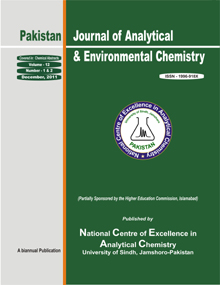Assessment of Total Mercury in Public Drinking Water: A Case Study of Sana’a City, Yemen
DOI:
https://doi.org/10.21743/pjaec/2025.06.03Keywords:
Total Mercury, DMA, Public drinking water, Environmental health, Wells water contaminationAbstract
Mercury (Hg) contamination in drinking water poses a significant health risk, as acknowledged by the World Health Organization (WHO). However, research on Hg contamination in potable water sources in Yemen is lacking. This study assessed Hg levels in potable water wells across different regions of Sana'a City, aiming to provide insights for future monitoring and policy development. Water samples from 58 wells in Sana'a City were analyzed using the validated DMA-80 method. Hg concentrations in all samples were below the WHO and Yemeni Organization for Standards Metrology and Quality Control threshold level (1 μg/L). Notably, the investigated wells exhibited some of the lowest levels of Hg contamination compared to reported values in literature from other regions globally. Moreover, no significant correlation was found between well depth and Hg concentration in the dataset. These findings establish a crucial baseline for monitoring efforts and policy development to mitigate Hg contamination in Sana'a's drinking water supply. The dataset from this study offers valuable information for policymakers, aiding their efforts to combat Hg contamination, ensure safe drinking water, support effective health measures, and enhance understanding of Hg contamination in Sana'a City, Yemen.
Downloads
Downloads
Published
Issue
Section
License
Copyright (c) 2025 Pakistan Journal of Analytical & Environmental Chemistry

This work is licensed under a Creative Commons Attribution-NonCommercial-ShareAlike 4.0 International License.











